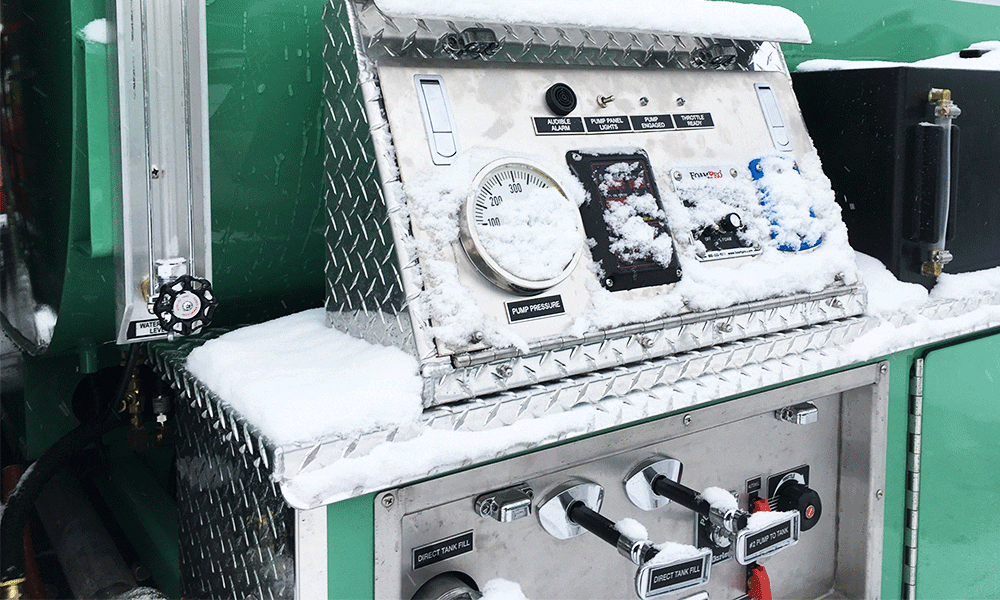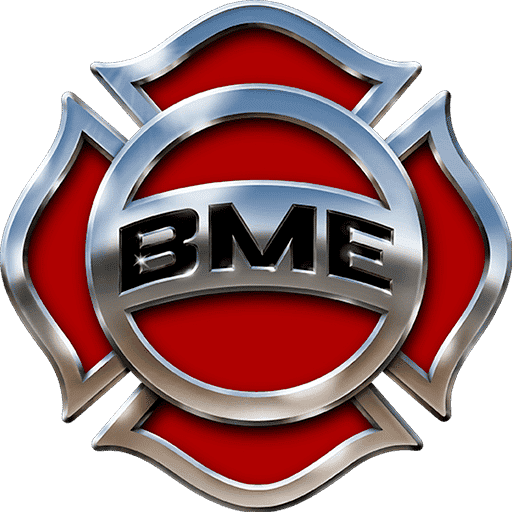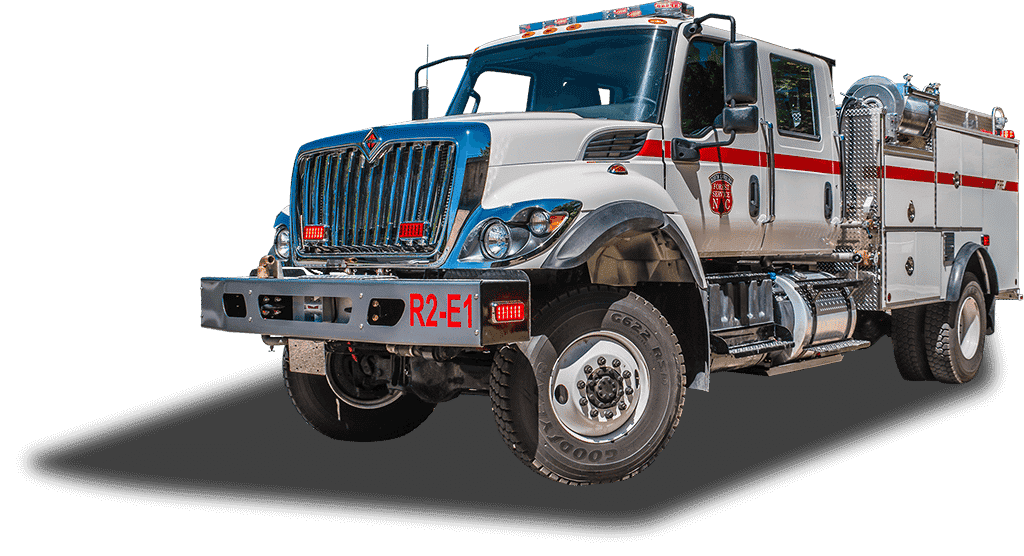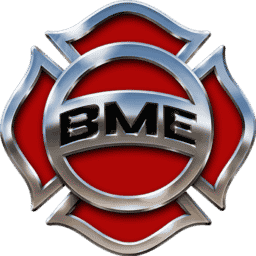 The winter weather for most people marks the time of the year that brings the holidays, skiing, slick roads, and a chance to hurl a snowball at a loved one or pesky neighbor. As a firefighter the upcoming winter provides a separate set of challenges that must be recognized to ensure the equipment and personnel responsible for protecting the community are safe. Historical evidence has shown the firefighting community that extended fire calls are more likely to occur during periods of severe cold. This result comes from the public utilizing approved and unapproved heating sources to combat the cold in their homes. The colder it gets the greater the probability that our personnel will become involved in a prolonged operation where saving life and property is necessary. It’s important to remember that the time to plan for winter firefighting operations begins long before the snowflakes start to fall. The following questions can be used to measure how prepared you are for the onset of colder temperatures: What has your fire department done to prepare your apparatus and personnel for winter? What has your fire department done to prepare experienced operators for winter driving?
The winter weather for most people marks the time of the year that brings the holidays, skiing, slick roads, and a chance to hurl a snowball at a loved one or pesky neighbor. As a firefighter the upcoming winter provides a separate set of challenges that must be recognized to ensure the equipment and personnel responsible for protecting the community are safe. Historical evidence has shown the firefighting community that extended fire calls are more likely to occur during periods of severe cold. This result comes from the public utilizing approved and unapproved heating sources to combat the cold in their homes. The colder it gets the greater the probability that our personnel will become involved in a prolonged operation where saving life and property is necessary. It’s important to remember that the time to plan for winter firefighting operations begins long before the snowflakes start to fall. The following questions can be used to measure how prepared you are for the onset of colder temperatures: What has your fire department done to prepare your apparatus and personnel for winter? What has your fire department done to prepare experienced operators for winter driving?
PREPARE YOUR FIRE APPARATUS
In order to ensure your apparatus is fully functional, preventative maintenance before and during cold weather is crucial. Prior to the onset of wintry weather, check and test all manufacturer points of inspection to include chassis, pumps, PPE, and any aerial outriggers if applicable. These inspections are critical since cold temperature can adversely affect all types of fire apparatus, especially the operating systems on aerial devices. Moreover, subzero temperatures can turn hydraulic fluids and oils used in the apparatus into molasses and cause a significant deficiency in the operating functions. Ensuring all fluids are warmed up and traveling freely throughout the apparatus components is a guaranteed way to keep the machine operating at peak efficiency anytime of the year. An established cycle of testing the apparatus allows the operators to familiarize themselves with what the normal operations look and sound like, thus making it easier to spot an abnormality when it occurs.
PREPARE YOUR FIRE CREW
During actual wintertime operations we must first address the human element of operating the apparatus. Let’s face it, if our people are not prepared to withstand the elements then this will result in an empty rig. Firefighting in the winter is unique in that personnel need protection from both heat and cold at the same incident. Firefighters are exposed to the cold while responding and setting up for the incident. However, they will encounter extreme heat while conducting an interior fire attack. After all interior incidents are stabilized then they may encounter the same cold conditions as they leave the fire and conduct rehab operations. These multiple cycles of hot and cold present a serious challenge to firefighters and their equipment. However, given the right mix of PPE, situational awareness, and a change of clothes with extra layers, an extended duration attack should not hamper firefighting efforts. Some departments stress that the best way to prepare for the above wintry weather operations is to condition personnel by training in these conditions. Common sense says that it would not be safe to train in a blizzard. However, training in inclement weather would be a great litmus test to see how your personnel and equipment function while undergoing frigid temperatures.
ASSESS YOUR SURROUNDINGS
The cold weather is especially concerning to engine operations due to the necessity of applying our most useful tool in stopping the spread of fire, water. Water and the subsequent development of ice becomes an issue when the temperature drops below 32 degrees Fahrenheit, water’s freezing point. Leaking valves that allow water to drain from the tank into the pump or into discharge piping can present a significant threat to operations. If any valves or drains are leaking the water that is left unchecked will quickly develop into ice and dramatically increase the potential of a slip and fall while leaving the surfaces unusable for personnel. The risk can be mitigated by getting the valves repaired to prevent them leaking. Additionally, it is recommended that if a leak does occur, firefighters should keep an absorb-all material on hand. When accompanied with an effort to reduce the accumulation of ice, this material, similar to kitty litter, works well to spread around the fire apparatus to facilitate better traction and reduce the risk of a fall.
DON’T GET STUCK IN THE SNOW
All precautions, best practices, and ‘what-if’s’ while at the operation are meaningless unless you can actually navigate the snow-covered roads to arrive on site. Emergency vehicles are not specially designed to travel through deep snow or unplowed streets. As an example, in the winter of 2016, New York City failed to plow the majority of their streets in the outer boroughs. Unplowed roads and unskilled drivers resulted in more than half of the ambulances that responded to calls in outer boroughs becoming stuck and require towing. Situational awareness while driving in these conditions is key. If unsure of the potential of the apparatus, don’t keep driving to see how far you can push the vehicle before it becomes stuck. Stop and assess the situation, the last thing one wants to do is call their chief and explain why your emergency vehicle got stuck as the call volume is growing. For those lucky enough, some apparatus vehicles have automatic drop-down chains for traction during winter weather. If your rig is equipped with this type of system, check the status and practice the deployment thoroughly prior to the winter season. While driving with the chains deployed, it is important to travel no faster than 30 to 35 mph, not in snow depths approaching more than 6 inches, and with the aid of spare parts to repair chains to prevent apparatus damage due to faulty chains. Chief J. Gordon Routley, a board member of the IAFC’s Safety department, jokes “Our best strategy: to plan and prepare for the inevitable and then plan to be on vacation in a warmer climate when the inevitable occurs.” In all seriousness he goes onto say that “Winter operations present a long list of additional safety concerns that put our men and women in danger”. We as fire chiefs must ensure that special preparations are initiated for predicted periods of unusual cold.” These are wise worlds to live by as we prepare and operate during the long chilly winter.
Get in Touch
Fields marked with an asterisk (*) are required.



